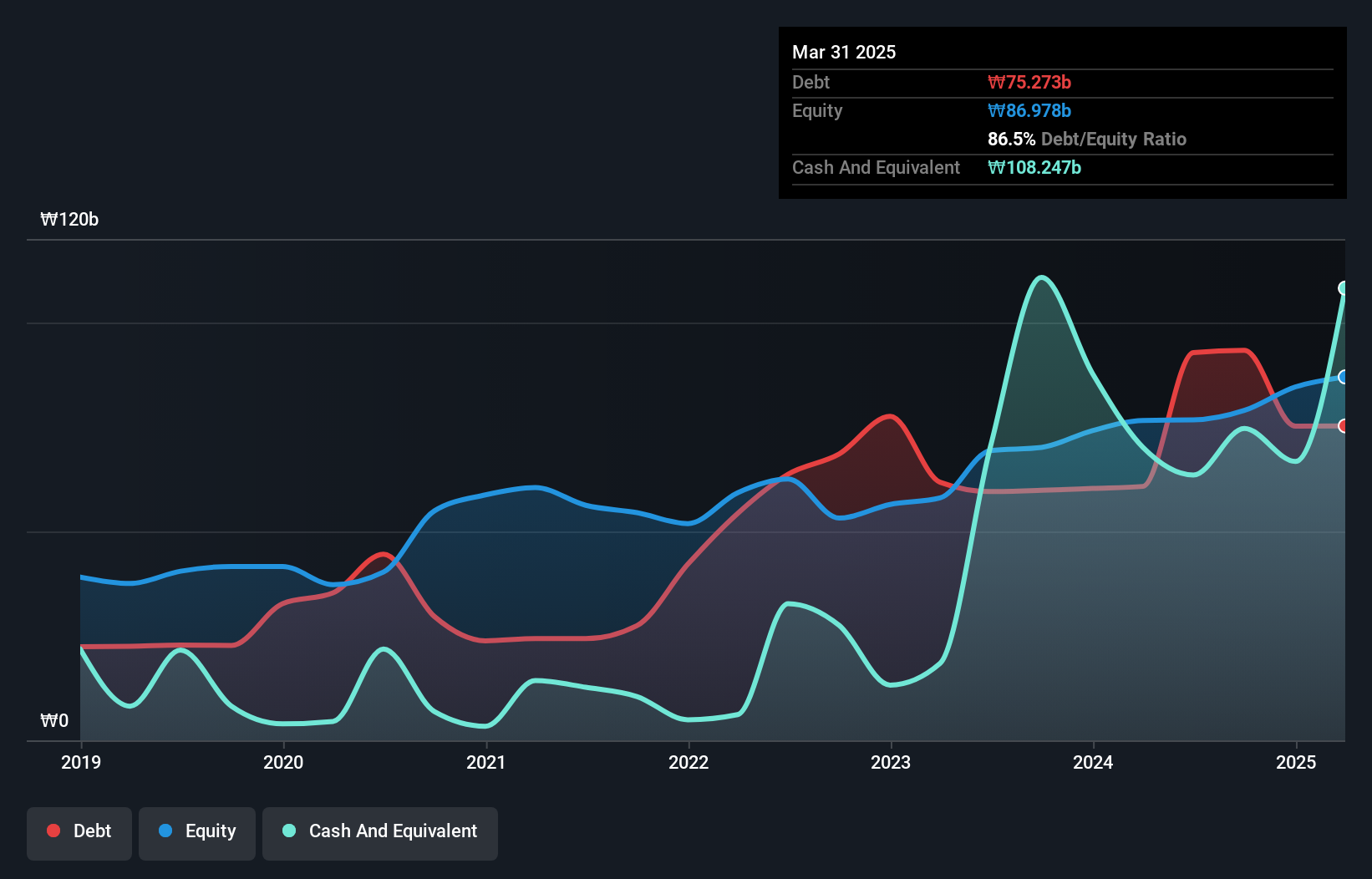Warren Buffett famously said, 'Volatility is far from synonymous with risk.' So it seems the smart money knows that debt - which is usually involved in bankruptcies - is a very important factor, when you assess how risky a company is. As with many other companies mPLUS Corp. (KOSDAQ:259630) makes use of debt. But the more important question is: how much risk is that debt creating?
When Is Debt Dangerous?
Debt and other liabilities become risky for a business when it cannot easily fulfill those obligations, either with free cash flow or by raising capital at an attractive price. Part and parcel of capitalism is the process of 'creative destruction' where failed businesses are mercilessly liquidated by their bankers. However, a more common (but still painful) scenario is that it has to raise new equity capital at a low price, thus permanently diluting shareholders. By replacing dilution, though, debt can be an extremely good tool for businesses that need capital to invest in growth at high rates of return. The first step when considering a company's debt levels is to consider its cash and debt together.
How Much Debt Does mPLUS Carry?
You can click the graphic below for the historical numbers, but it shows that as of March 2025 mPLUS had ₩75.3b of debt, an increase on ₩60.8b, over one year. However, it does have ₩108.2b in cash offsetting this, leading to net cash of ₩33.0b.

How Strong Is mPLUS' Balance Sheet?
Zooming in on the latest balance sheet data, we can see that mPLUS had liabilities of ₩186.3b due within 12 months and liabilities of ₩42.3b due beyond that. Offsetting these obligations, it had cash of ₩108.2b as well as receivables valued at ₩11.4b due within 12 months. So its liabilities outweigh the sum of its cash and (near-term) receivables by ₩109.0b.
Given this deficit is actually higher than the company's market capitalization of ₩106.0b, we think shareholders really should watch mPLUS's debt levels, like a parent watching their child ride a bike for the first time. In the scenario where the company had to clean up its balance sheet quickly, it seems likely shareholders would suffer extensive dilution. Given that mPLUS has more cash than debt, we're pretty confident it can handle its debt, despite the fact that it has a lot of liabilities in total.
See our latest analysis for mPLUS
Shareholders should be aware that mPLUS's EBIT was down 63% last year. If that decline continues then paying off debt will be harder than selling foie gras at a vegan convention. When analysing debt levels, the balance sheet is the obvious place to start. But you can't view debt in total isolation; since mPLUS will need earnings to service that debt. So when considering debt, it's definitely worth looking at the earnings trend. Click here for an interactive snapshot.
But our final consideration is also important, because a company cannot pay debt with paper profits; it needs cold hard cash. mPLUS may have net cash on the balance sheet, but it is still interesting to look at how well the business converts its earnings before interest and tax (EBIT) to free cash flow, because that will influence both its need for, and its capacity to manage debt. Over the last two years, mPLUS actually produced more free cash flow than EBIT. That sort of strong cash generation warms our hearts like a puppy in a bumblebee suit.
Summing Up
Although mPLUS's balance sheet isn't particularly strong, due to the total liabilities, it is clearly positive to see that it has net cash of ₩33.0b. The cherry on top was that in converted 240% of that EBIT to free cash flow, bringing in ₩26b. So while mPLUS does not have a great balance sheet, it's certainly not too bad. There's no doubt that we learn most about debt from the balance sheet. However, not all investment risk resides within the balance sheet - far from it. These risks can be hard to spot. Every company has them, and we've spotted 2 warning signs for mPLUS you should know about.
If, after all that, you're more interested in a fast growing company with a rock-solid balance sheet, then check out our list of net cash growth stocks without delay.
New: AI Stock Screener & Alerts
Our new AI Stock Screener scans the market every day to uncover opportunities.
• Dividend Powerhouses (3%+ Yield)
• Undervalued Small Caps with Insider Buying
• High growth Tech and AI Companies
Or build your own from over 50 metrics.
Have feedback on this article? Concerned about the content? Get in touch with us directly. Alternatively, email editorial-team (at) simplywallst.com.
This article by Simply Wall St is general in nature. We provide commentary based on historical data and analyst forecasts only using an unbiased methodology and our articles are not intended to be financial advice. It does not constitute a recommendation to buy or sell any stock, and does not take account of your objectives, or your financial situation. We aim to bring you long-term focused analysis driven by fundamental data. Note that our analysis may not factor in the latest price-sensitive company announcements or qualitative material. Simply Wall St has no position in any stocks mentioned.
About KOSDAQ:A259630
mPLUS
Manufactures and sells secondary battery manufacturing equipment in South Korea, China, Asia, the Americas, Europe, and internationally.
Flawless balance sheet with solid track record.
Market Insights
Community Narratives




